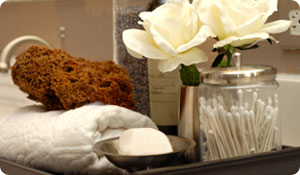
Our ears are designed to be self-cleaning devices, but sometimes they need a little help. It's important to clean them the right way, though, and digging around with a cotton stick is not the way to do it. So when it comes to giving your ears a proper cleaning, what's healthy and what's not?
Earwax is called cerumen and is composed of oils, secretions produced by hair follicles, and tissues that line the ear canal. Its purpose is to protect the fragile structures of the inner ear from dirt and foreign substances. Most of the time, our ears produce just the right amount of earwax. Excess wax drains to the outside of the ear where it can be easily wiped away. Some people, however, produce more earwax than they need. If it builds up, it can create a plug (called an impaction) that can lead to pain and itching, infection, ringing in the ears, and even hearing loss.
About 12 million people see a doctor every year for help with earwax buildup. Many have tried removing it on their own with water, oil, or Q-tips®, but still don't find any relief. Some people damage their hearing by irritating the delicate tissue lining the ear canal. That's why it's best to consult your physician if you have excessive wax buildup.
What's the right way to clean your ears? Wiping your outer ear with a washcloth is more than enough for daily cleaning. If your doctor has determined you need more thorough earwax removal, he may recommend using earwax softening drops and/or gentle irrigation.
Earwax softening drops. Available over-the-counter, these products are considered safe for at-home use:
- Baby oil
- Commercial drops
- Glycerin
- Mineral oil
- Detergent drops such as hydrogen peroxide or carbamide peroxide.
Place a few drops in the ear, wait five to 20 minutes, and let the drops and wax flow from the inner ear to the outer ear where it can be gently wiped away.
Irrigation. When softening drops aren't enough, irrigating the ear canal with water might do the trick. You'll need a bulb syringe and lukewarm water.
- With your head upright, straighten the ear canal by gently pulling the outside ear upward.
- Fill the syringe and using gentle pressure, squirt a small stream of water against the ear canal wall.
- Tip your head and let the water and wax drain out over a basin or sink.
- You might have to repeat this process several times.
If this doesn't work, consult your doctor. She might repeat the irrigation process, suction the ear canal, or use a special tool to remove the plug. She may also recommend you come in for regularly scheduled cleanings. Never attempt to clean the inner ear if you have an infection, a damaged eardrum, use hearing aids or have tubes in your ears. Leave that to the professionals.





